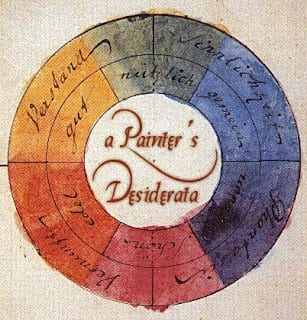 So here is one of my absolute favorite things… my “wine glass holder” ($15.00) from Open Box M (openboxm.com). I have had them overnight these for me when I lose one! No. I am not that desperate for wine.
So here is one of my absolute favorite things… my “wine glass holder” ($15.00) from Open Box M (openboxm.com). I have had them overnight these for me when I lose one! No. I am not that desperate for wine.
Most of us have been through many of the sealable brush washers and had problems with leaking. On a recent trip, I decided to apply a little common sense to the problem.
Here I have placed a small, round, storage container (like Rubbermaid, ZipLoc, Gladware, etc.). This one cost $2.67.
Here it is shown with the lid on. This tiny OMS container NEVER leaks in my backpack. It is shown here with a small, 2 oz. sample bottle of Gamsol to give you an idea of the compact size.
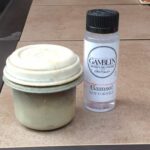
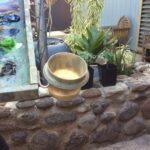
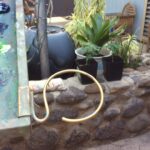

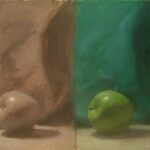





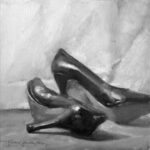


 Denver is a great case study to understand the general health of representational art. Several well-known galleries in the area including Saks Gallery and Abend Gallery have been in business for many years and are credible institutions with solid reputations. Their exhibition openings are well-attended and feature art that depicts realistic subject year-round. Knowing this, I feel reassured again that the state of representational art was alive and well. However, there are more than 100 art galleries in the Mile High City, and looking at the bigger picture, it seems that there are fewer galleries that promote representational works than those that promote other genres. For example, the River North Art District (RiNo) almost exclusively promotes non-representational works. Maybe it’s not about the quantity of representational art galleries that indicates whether or not the genre is dying. A deeper look into art history reveals some interesting trends too.
Denver is a great case study to understand the general health of representational art. Several well-known galleries in the area including Saks Gallery and Abend Gallery have been in business for many years and are credible institutions with solid reputations. Their exhibition openings are well-attended and feature art that depicts realistic subject year-round. Knowing this, I feel reassured again that the state of representational art was alive and well. However, there are more than 100 art galleries in the Mile High City, and looking at the bigger picture, it seems that there are fewer galleries that promote representational works than those that promote other genres. For example, the River North Art District (RiNo) almost exclusively promotes non-representational works. Maybe it’s not about the quantity of representational art galleries that indicates whether or not the genre is dying. A deeper look into art history reveals some interesting trends too. Art history tells us there are times when certain art forms and styles are more popular. In the late 1800’s, traditional artists had to eventually yield to newer impressionists. After this, post-impressionists dominated the art scene. Expressionists gained popularity, and later came the abstract expressionists… and so on. Judging by history, we know there are cycles in the styles of art and what appeals to society. But we also know that even with all the small changes and larger epochal shifts in artistic styles, representational art has never truly gone away. It may have been less popular during certain periods, but there is plenty of good evidence (in the form of very good paintings) that representational art is not dead.
Art history tells us there are times when certain art forms and styles are more popular. In the late 1800’s, traditional artists had to eventually yield to newer impressionists. After this, post-impressionists dominated the art scene. Expressionists gained popularity, and later came the abstract expressionists… and so on. Judging by history, we know there are cycles in the styles of art and what appeals to society. But we also know that even with all the small changes and larger epochal shifts in artistic styles, representational art has never truly gone away. It may have been less popular during certain periods, but there is plenty of good evidence (in the form of very good paintings) that representational art is not dead.